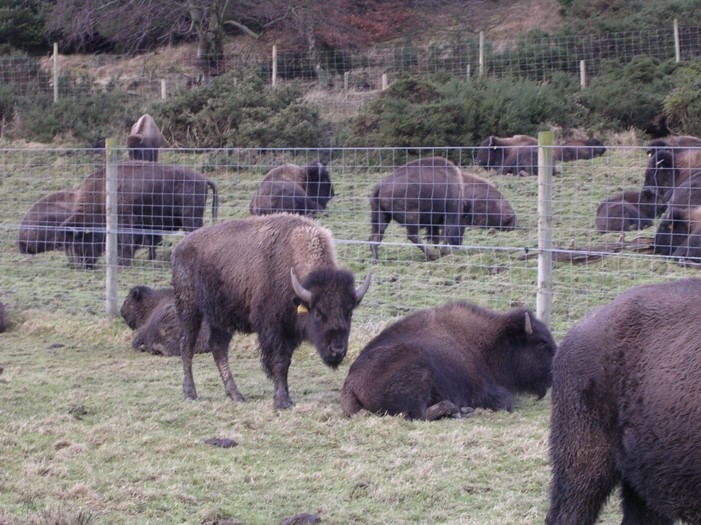Bovine TB (bTB) is a chronic, infectious and primarily respiratory disease caused by the slow-growing bacterium Mycobacterium bovis (M. bovis). It is mainly a disease of cattle and other bovines such as bison, but can affect a wide range of mammal species, including other farmed and domestic animals and humans.
As in other parts of the world, all keepers of cattle, Asiatic water buffalo and bison in GB are required by law to have their animals skin tested for TB as part of prescribed surveillance regimes which reflect the regional risks of disease. Under the relevant domestic legislation (TB Orders), keepers of bovine animals in GB must have their herds TB tested using the skin test, within the time frame specified by the Animal & Plant Health Agency (APHA).

Bison are fast, powerful animals. They are the largest native herbivore in Europe and North America. Adult males can grow to a height of 1.9m, reach a length of 3m and weigh up to 1000kg. Handling bison can be difficult, so a good understanding of the animals’ behaviour and stress triggers is essential to ensure safe handling. Bison keepers are legally obliged under the TB Orders to have adequate handling facilities in place to ensure the safe and timely completion of TB testing and other management procedures including routine preventative livestock care and treatment. Bison keepers are encouraged to seek specialist advice on safe, best practice handling techniques.
Q&A
Yes. The bTB regulations apply to keepers of all farmed bovine animals, including bison and water buffalo. The routine surveillance testing of bovine herds for TB is an essential disease control measure. Bison are susceptible to the disease and can act as reservoirs of M. bovis for other animals. The timely testing of herds ensures that infected animals are picked up quickly, thereby reducing the risk of TB spreading within herds and to neighbouring herds, either directly or via wildlife. Interferon-gamma blood testing may also be necessary to supplement the skin test in herds of bison under TB restrictions if lesion-positive test reactors or M. bovis culture-positive animals are found. The pre- and post-movement TB testing rules for cattle may also apply to bison moved between two holdings, depending on the herds’ location and routine testing interval.
If TB skin testing becomes overdue, then movement restrictions will be placed on the herd and its officially TB free (OTF) status will be suspended (OTFS). Failure to comply with an APHA notice requiring TB testing by a certain date is an offence under the respective TB Orders in GB and enforcement action may be taken. This may include being referred to the relevant Local Authority.
Bison feel secure in dark areas. The use of solid sides can greatly reduce the level of fear in bison while they are being worked. Solid sides provide some darkness as well as the illusion of restraint. If the animal cannot see an opportunity to escape, it will be less likely to attempt an escape. Training bison for routine husbandry procedures reduces stress and is an effective low-cost technique for the prevention of injuries and deaths to the animals. This generic bison handling advice has been taken from a paper by Temple Grandin, a world renowned US scientist and animal behaviourist. Bison keepers are encouraged to seek expert advice tailored to their specific herd situation. Information and support can also be found by contacting the British Bison Association at [email protected]

Useful resources
- Bison Care and handling: The calming of American Bison (Bison bison) During Routine Handling
- Training American Bison (Bison bison) Calves
- Buffalo Handling Requirements (‘buffalo’ means American bison in this context)